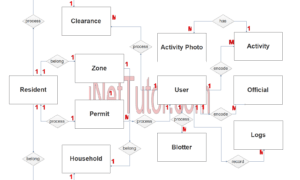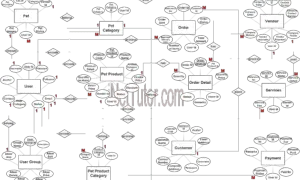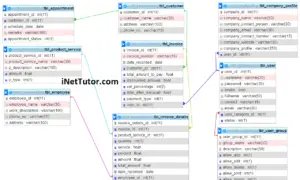IPO Model Conceptual Framework of MobileMangrove: Mobile Based Mangrove Species Field Guide
This article will show you how to create a conceptual framework for the capstone project titled MobileMangrove: Mobile Based Mangrove Species Field Guide. The input, process, output (IPO) model was used to create the conceptual foundation for this investigation.
About the Project
The capstone project entitled “MobileMangrove: Mobile Based Mangrove Species Field Guide” is mobile based system intended to be used as a source of information about mangrove species. MobileMangrove will facilitate information about the different species of mangroves base on its leaves, flowers, fruits, bark and roots.
This is a field guide for identifying mangrove species using a mobile device. It includes images and descriptions of the mangrove species, as well as their habitats. Awareness about the importance of mangroves must be instill in peoples mind. According to research, mangroves help protect our shorelines from damaging storms, wind, waves and floods. It helps maintain water quality and clarity, filtering pollutants and trapping sediments originating from land. Mangroves help and protect coastal areas in various ways resulting to various groups initiating to plant mangroves. But due to lack of knowledge about mangrove species, the planting initiative did not yield positive results. What people need is a broader awareness about mangrove species.
Objectives of the Study
- Output of the capstone project will contain information about all the species of mangroves.
- The system will provide specification of the specific parts of the mangrove for identification.
- To design a system that will help in increasing the numbers of mangroves planted in shorelines.
- Develop a system that is helpful and easy to use.
-
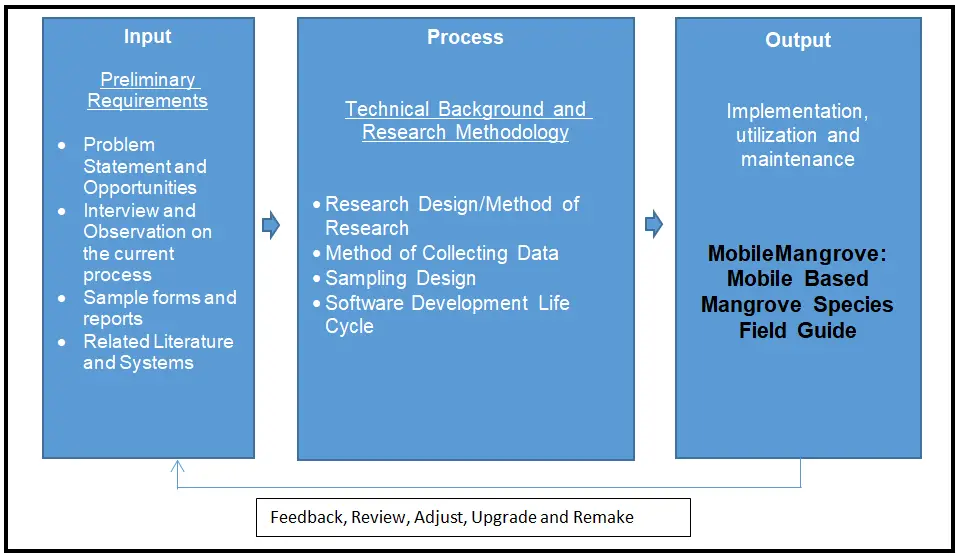
Conceptual Framework of Mobile Based Mangrove Species Field Guide
The image above is the conceptual framework of the project entitled MobileMangrove: Mobile Based Mangrove Species Field Guide. It is based on IPO model or also known as the input, process and output model.
Input
The input phase or the knowledge requirement stage consists of the following:
- Problem Statement and Opportunities – the researchers selected to conduct a study on mangrove species field guide.
- Interview and Observation on the current process – the researchers conducted a preliminary interview and observation method to further understand the processes involved in the current ways to studies mangrove species.
- Sample forms and reports – the researchers also gathered the sample forms and reports. This serves as a guide in the preparation of form design and reports of the system.
- Related Literature and Systems – the researchers conducted a research on the different literatures and related systems to serve as a guide in the development of the Mobile Based Mangrove Species Guide.
Process
- Method of Research
The researcher employed descriptive-developmental research methods. The typical processes of planning, conducting, and reporting a research project—problem definition, literature reviews, and research procedures—are described in this paper (link.springer.com). Descriptive research explains what the study is about. The study focuses on the current condition, with the goal of discovering new truths. It is concerned with existing relationship conditions, methods that succeed, ongoing processes, and developing effects. Descriptive research entails components of interpretation of the relevance of what is presented, with the primary emphasis on the finding of ideas and insights (www.slideshare.net).
- Method of Collecting Data
The researchers used interviews as a way to get in-depth and to gather data. It consists of one person interviewing another person for personal or detailed information. The interviewer will ask questions from a written questionnaire and recorded the answers in order to summarize the findings.
- Development of Research Instrument
Before collecting data, the researchers built their own research instrument. The Good and Scate questionnaire was used to validate this self-created assessment by three experts. The researchers employed common criteria defined in McCall’s Software Quality Model surveys to test the system’s quality.
- Software Development Life Cycle
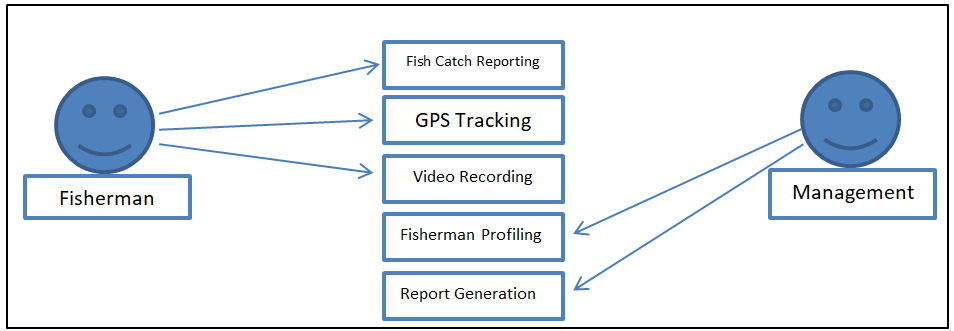
Analysis and Quick Design
During Analysis and Quick Design, the researchers performed an interview with the respondents in the location of the study. Respondents were given the opportunity to make suggestions and requests about how the system should be created and developed. Following data collection, the researchers created an early design for the developed system.
Data Analysis
The researchers analysed all the data, information, and the user requirements. This phase, the project lifecycle began. The researchers tried to understand the data and information on how to create the system and help conceptualize on how the developed system would be began beneficial to the operators. It analysing the needs of the end users to ensure that the new system can meet their expectations.
System Design
The researchers started to develop the system. This phase describes the necessary requirements, features and operations that satisfies the functional requirements of the developed system which in place. This phase decides how the system operates.
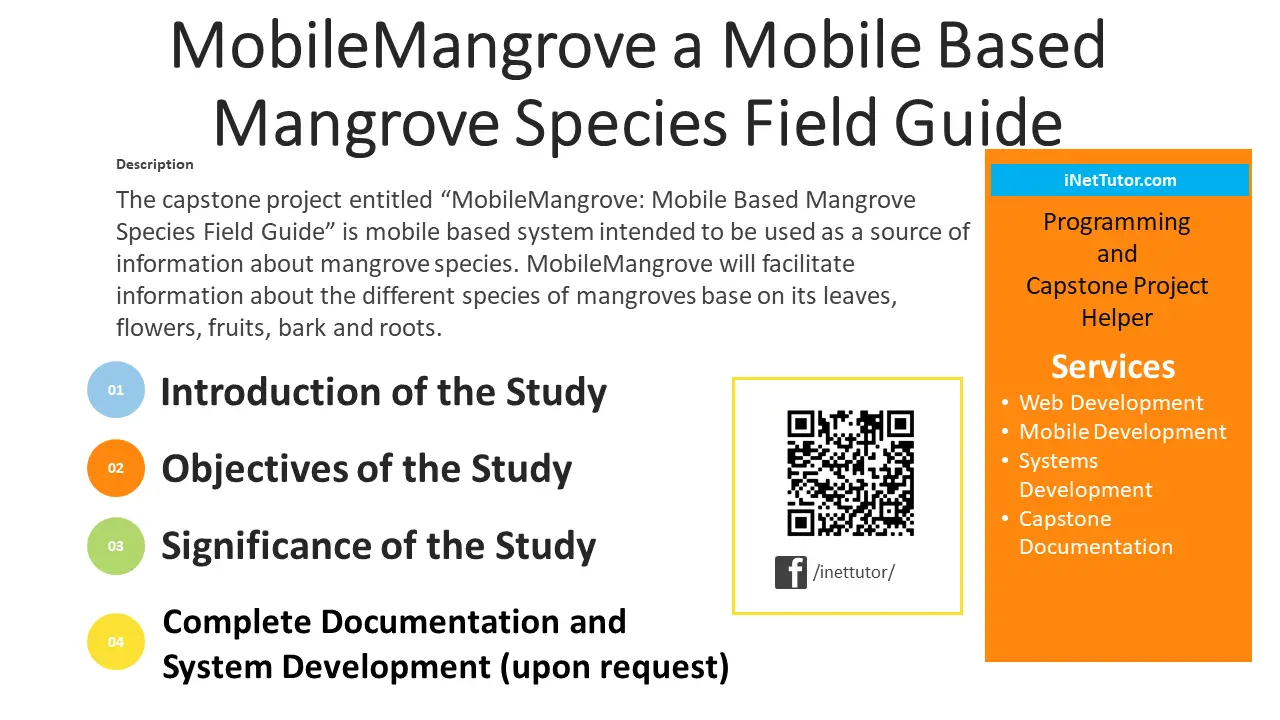
Prototype Cycle
This phase comprises the process of developing a system model, demonstrating it, and refining the data acquired. The researchers initially created a prototype model based on the planned design, which was then shown to the responders. After constructing the prototype, the researchers demonstrated the system’s operation, the flow of how it operates, and the functions of the elements included in the system. Refinement is the final stage. At this stage, the researchers updated the system based on the extra requirements of the operator. This included improvements to the flow, functionality, and features based on the needs provided by the respondents. This aided the researchers in generating a preliminary set of system requirements.
Testing
This includes the feed backing of the developed system that was installed and tested by three (3) experts and its intended users. This part put into production by moving the data and components from the old system to the new system.
Output
The final product of the study is Mobile based Mangrove Species Field Guide that will help facilitate information about the different species of mangroves base on its leaves, flowers, fruits, bark and roots. Implementation of the system is highly encouraged.
Summary
This article focuses on the conceptual framework of the study as developed utilizing the input, process, output model, or IPO model. The input phase, also known as the knowledge required stage, includes a Problem Statement and Opportunities, an Interview and Observation of the Current Process, Sample forms and reports, and Related Literature and Systems. The following phase, the process stage, comprises of Research Design/Method of Research, Data Collection Method, Sampling Design, and Software Development Life Cycle. The study’s ultimate outcome is a Mobile based Mangrove Species Field Guide that will aid in the dissemination of knowledge on the many species of mangroves based on their leaves, blooms, fruits, bark, and roots. The system’s implementation is strongly encouraged.
You may visit our Facebook page for more information, inquiries, and comments. Please subscribe also to our YouTube Channel to receive free capstone projects resources and computer programming tutorials.
Hire our team to do the project.
Related Topics and Articles:
Game-Based ELearning Platform for Fisheries
IPO Model Conceptual Framework of Gold Fish Guide Mobile App
How to design Gold Fish Guide Application
Solar Powered Smart Aquaponics System
CITY AGRICULTURE OFFICE POSTHARVEST FACILITIES MONITORING AND MANAGEMENT SYSTEM
